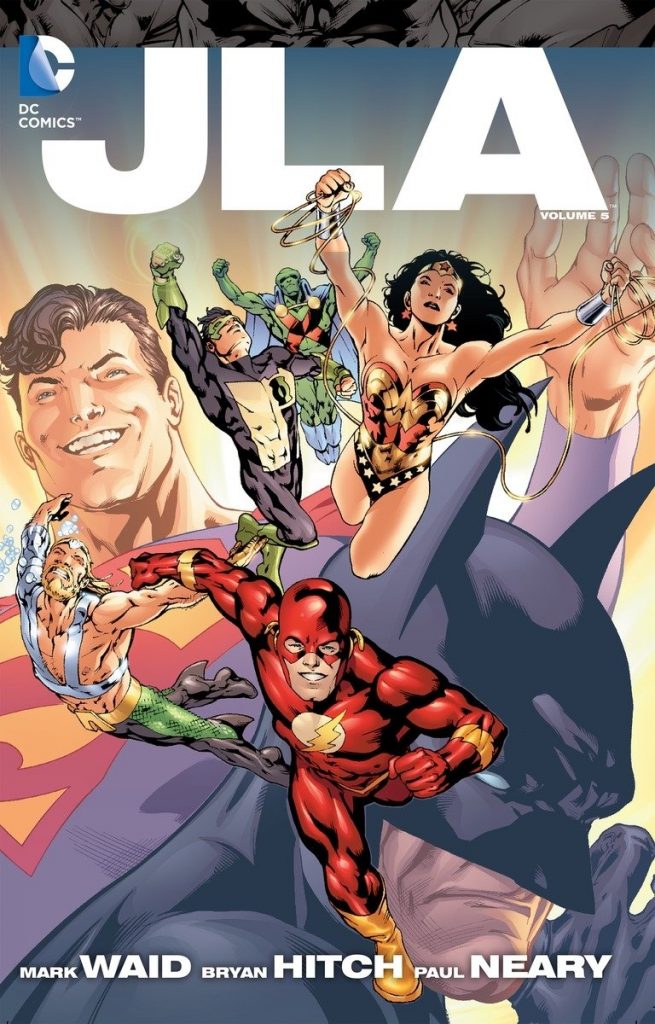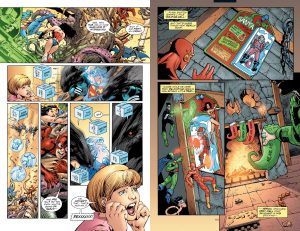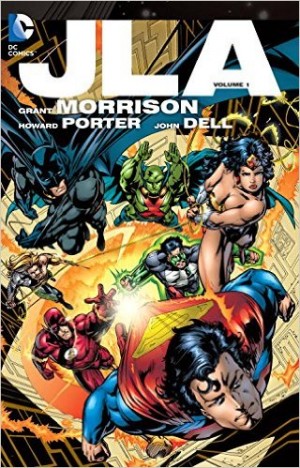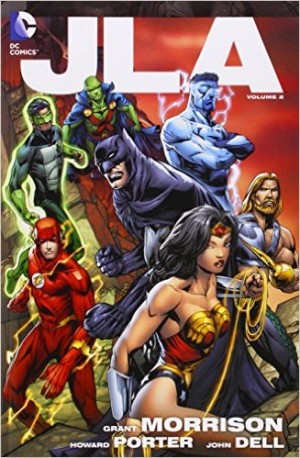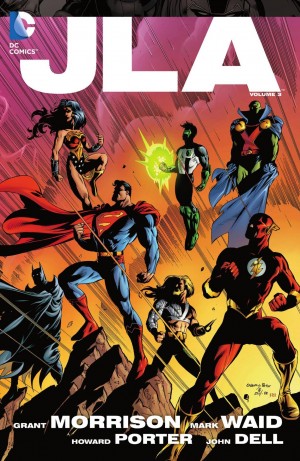Review by Karl Verhoven
In principle, a creative team of Mark Waid and Bryan Hitch working on the Justice League should have produced greatness. One of Waid’s most obvious writing strengths is to channel the spirit of the comics he loved as a child in the 1960s, but with a contemporary twist, and when he began on JLA Hitch had just redefined what superhero teams could look like with his widescreen vision on The Authority. Sadly, their run didn’t work out and is far from fondly remembered.
It’s immediately apparent that Hitch wasn’t enthused by the plots. His best art is on what was originally issued in oversized format as Heaven’s Ladder, but problems with the writing are already apparent in a plodding story that dwarfs the JLA amid unimaginably giant structures. It represents Waid’s writing as a whole, in which some good ideas are swamped by the dull mechanics of stringing them together. It affects not only ‘Heaven’s Ladder’, but the stories previously collected in Divided We Fall and Terror Incognita. The first batch are the fallout from a previous Waid story, Tower of Babel, provided in Volume 4, in which Batman was rather discredited. There’s a powerful moment concluding that when this incarnation of the Justice League share their civilian identities, but much of the previous disagreement comes across as contrived. The JLA up against the wicked Queen from fairy tales doesn’t work as a well as it should either, but credit Waid with coming up with the idea before Fables.
Much of his run deals with identity, the JLA separated from theirs being one, and facing their doppelgangers another, but it never lives up to the promise. The one exception is a gloriously wacky Christmas story closing the book, in which Waid and Cliff Rathburn (right sample page) have Plastic Man telling a cynical kid how Santa Claus joined the JLA, with the kid picking holes in his story – “Wasn’t this magic? Isn’t Superman hurt by magic?” It’s funny, it’s clever, and while it may not be world-shattering, it works fine for what it is.
Hitch overcomes his ennui to produce the occasional stunning spread, such as one of the Justice League’s moon headquarters, but all too often his pages resemble the left hand sample page, perfectly acceptable art, but hardly the phenomenal work for which Hitch was known. Separating chapters drawn by Hitch are some by a young Mike S. Miller, who’s overstretched. He can lay out a dynamic page, but all too often you’re looking at figures and considering what’s wrong about them rather than following the story. Somewhere online there’s probably a detailed explanation why Hitch couldn’t complete a story, and much of the work by those filling in is either rushed or at short notice, because it’s not memorable. Ty Templeton is an exception, and so is J.H. Williams III doing a storybook chapter.
On the whole, then, very disappointing. Volume 6 begins Joe Kelly’s run on JLA.
